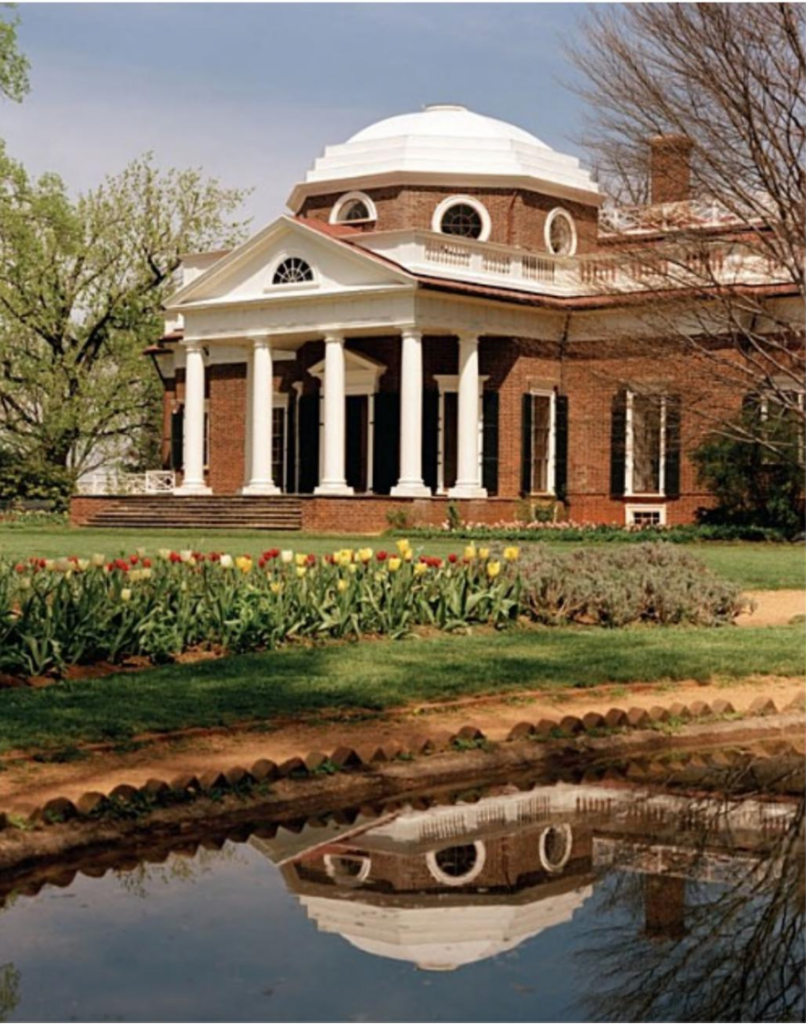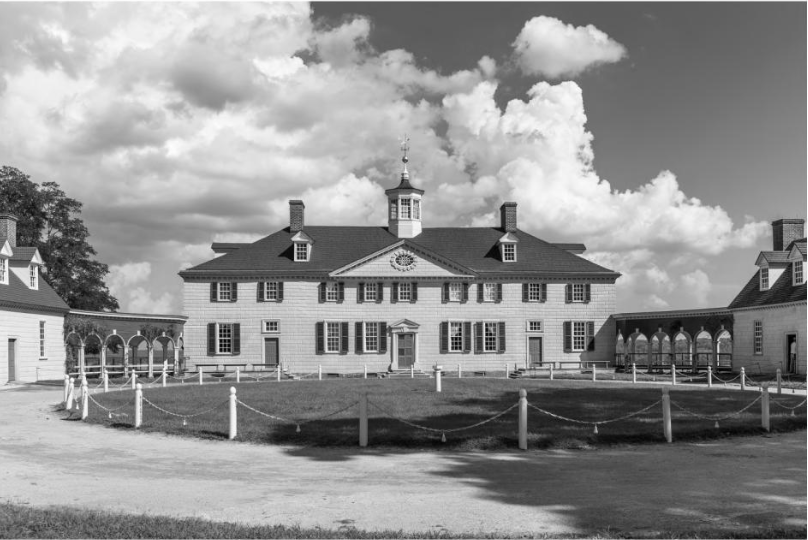For today’s post, we thought it would be fun to take our readers on a quick tour of presidential homes in Virginia — the state that served as the birthplace for eight U.S. presidents. Old Dominion has produced more presidents than any other state, including George Washington, Thomas Jefferson, James Madison, James Monroe, William Henry Harrison, John Tyler, Zachary Taylor and Woodrow Wilson. Indeed, few states bring as much historical bounty, especially for the lover of grand Federal and Georgian estates of the presidential variety.
Jefferson’s Virginia: Monticello and Beyond
As Macaluso points out in her new book, the Piedmont region of central Virginia is affectionately known as “Jefferson Country” because of its inextricable link to the former president. Not only did Jefferson lay his roots here by building a handful of grand mansions, but he also lent his design eye to several significant structures still standing today, including the Virginia State Capitol Building and The Rotunda at the University of Virginia, among others.

But it’s Monticello that truly showcases Jefferson’s design style, which is undoubtedly Jeffersonian — a distinct expression of Neo-Classicism marked by sand-painted columns, octagonal domes and grand porticos. Jefferson designed and built Monticello when he was just 26, during the time when he served as a county delegate and practiced law in Albemarle County. The house was and continues to be a symbol of early America, having been printed on currency — it’s still on the nickel today — and drawing some 430,000 visitors every year.
One of the most fascinating aspects of Monticello is what was known as Mulberry Row, what the Jefferson Foundation calls “the dynamic, industrial hub of Jefferson’s 5,000-acre agricultural enterprise.” As Macaluso points out, Mulberry Row was populated by some 130 enslaved men, women and children at any given time at Monticello. Today, you can visit re-created enslaved cabins on Mulberry Row at Monticello.
The estate is easily Jefferson’s most well-known structure, and arguably the most famous presidential home still standing, but there are some lesser-known Jeffersonian structures in Virginia that are well worth a visit for the lover of historic and presidential homes. One such example is Poplar Forest, a plantation house in Virginia’s Bedford County, which was built by Jefferson between the years of 1806 and 1826 as a rural retreat and plantation.
George Washington’s Mount Vernon

Virginia is also home to Mount Vernon, George Washington’s 250-year-old mansion that sits on the banks of the Potomac River 8 miles south of Alexandria. Washington acquired the one and a half story home in 1974 and spend 45 years developing it to its final state: a 21-room home with approximately 11,000 square feet of living space. In Patrick L. O’Neill’s book “Virginia’s Presidential Homes,” the author points out that, following Washington’s death, his family fought to have him interred on the land. He was laid to rest at Mount Vernon in 1799, beneath the long portico. You can visit his grave in The Tombs of Mount Vernon today.
James Madison’s Montpelier
The Orange, Virginia home of fourth president James Madison is cited as one of the finest examples of Federalist architecture and is one of the largest presidential homes in the United States. Construction on the estate began in 1763 and culminated just before the war of 1812. In those five decades, the Madisons added a Tuscan portico, a large drawing room and two single-story wings at either end of the house. The estate changed hands many times after Madison’s death and eventually landed in the hands of the Du Pont family, who more than doubled its size.
Other Presidential Homes to Visit
While the above three estates are indeed the most-visited presidential homes in Virginia, there are many more worthy estates of former commanders in chief that you can still visit today. John Tyler’s Sherwood Forest, built in 1730, still stands in Charles City County, while William Henry Harrison’s Berkeley Plantation is open for public tours just 16 miles away. Theodore Roosevelt’s rural cabin, Pine Knot, is still maintained and open to the public, and The Woodrow Wilson Presidential Library and Museum in Staunton houses the Greek revival home where Wilson was born.
Indeed, if presidential dwellings are your thing, then you’ll definitely want to make some time to visit Virginia this year. We recommend following the Presidential Trail of Virginia, which takes you from Northern Virginia’s Mount Vernon and finishes in Leesburg at James Monroe’s Oak Hill, stopping at various presidential sites along the way.

